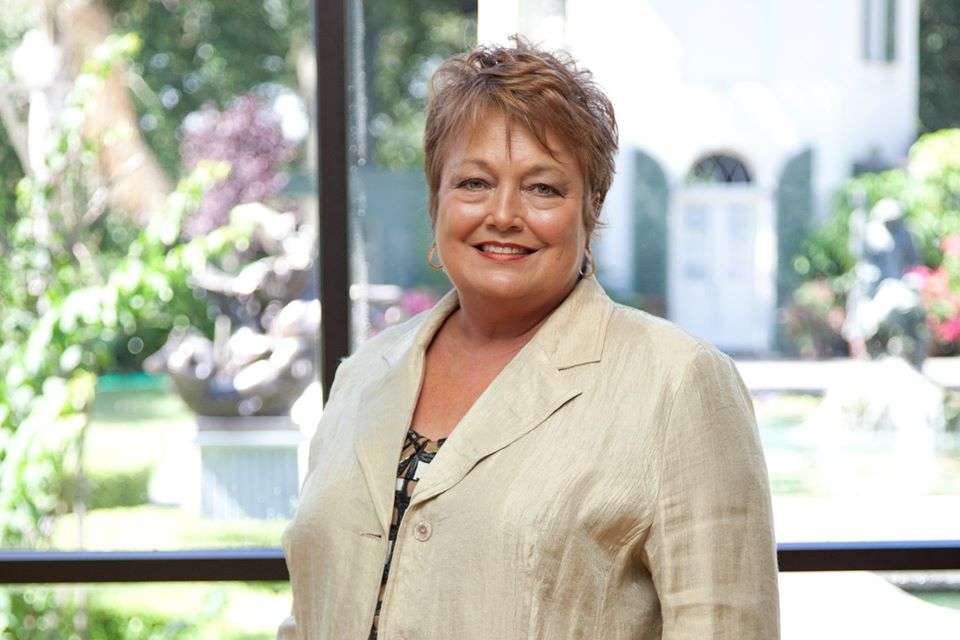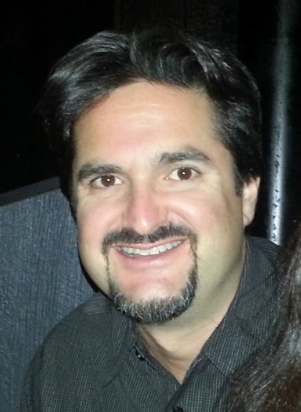
MANY, Louisiana – A half-century history on Toledo Bend Reservoir is punctuated with momentous moments.
There’s the first B.A.S.S. tournament held on the reservoir in 1970 that boasted a field that would become a Who’s Who of fishing greats. There’s the decision in 1989 to begin stocking Florida-strain fingerlings that eventually supplied the lake with championship-caliber catches. Then only a few years later, Cypress Bend Park and Resort were built and provided anglers from around the world attractive facilities to enjoy after trekking here for world-class bass.
Linda Curtis-Sparks grew up in tiny Sabine Parish, in the heart of Toledo Bend’s Lake Country. She witnessed the reservoir’s birth, and she’s helped manage its rise to destination fishery. And the impact she’s had on the success of the mammoth, 185,000-acre waterway cannot be understated.
Toledo Bend was an underutilized gem a couple decades ago, even as the fifth-largest body of water in the U.S. (when measured by surface area). But under Curtis-Sparks’ watch, it was named by Bassmaster Magazine as the nation’s best lake in both 2015 and 2016. The area regularly hosts tournaments for anglers of all abilities, and they collectively have funneled millions of dollars into the historically humble Sabine Parish.
Signs abound that business is good too, as new restaurants and office spaces have popped up on Louisiana Hwy. 6 that cuts across through “Toledo Town” and across the reservoir. Every parking lot of every gas station or motel in town has been filled during a week of college and high school tournaments with pickups trucks and bass boats, too.
Trophy bass are credited for the success here, and rightfully so. Curtis-Sparks, however, has without question helped pen this success story. She previously served as Director of both the Sabine Parish Chamber of Commerce and Sabine River Authority, the latter of which helps manage Toledo Bend. She held that job for 13 years before “retiring” to helm the Sabine Parish Tourist Commission.
After 13 years in that position, Curtis-Sparks is retiring soon, and it’s a bittersweet moment for her and many in the sport who know the role she’s played in growing one of America’s favorite lakes. She helped ready things to host the 2020 Carhartt Bassmaster College Series at Toledo Bend presented by Bass Pro Shops, but she’s handed off most of the work to other tourist commission staff.
“Toledo Bend has been a passion of mine for a long time,” she said by telephone from her office on Day 1 of the college series tournament. “I’m 72 now, and I’m transitioning out, training my staff to handle things. I could go down (to Cypress Bend Park), but my energy level and my balance aren’t what they used to be.
“But I’m always paying attention to what’s going on at Toledo Bend.”


Tracing history
Sabine Parish (a county in other states) is a heavily forested place in northwest Louisiana, and it’s dotted by tiny towns with names like Zwolle, Florien and Pleasant Hill. The seat of parish government is Many, which is something of a misnomer, because there aren’t ‘many’ people in Many (just more than 2,800 people at last count).
Curtis-Sparks was born in Many (pronounced “Manny”), with her ancestors having moved to the area around 1820. When she was a young girl, the 185,000 acres that today are covered by water were mostly farmland and homesteads on both the Texas and Louisiana sides of the Sabine River.
The idea for the reservoir came after discussions by farmers in both states about how to share the Sabine’s water which nourished their crops. Each state formed a river authority board, and a feasibility study for a water conservation project began in 1955. A grass-roots campaign went statewide to help garner support for Louisiana Constitutional Amendment 8, which funded the project. By 1959, both Louisiana and Texas had $30 million set aside to begin building the reservoir.
Toledo Bend officially opened in 1969, when the water level on the reservoir reached a desired elevation of 164 and 172 feet. A dam was built to control water flow and generate power, and the energy was sold to help retire the bonds that financed the entire project.
Before any of that could happen, however, all those acres had to be purchased from individual landowners, and hundreds of residents on both sides of the Sabine had to be relocated. Fertile farmland, and huge swaths of timber, were exchanged for water conservation and recreation. Some opposed the plan, others such as Curtis-Sparks understood the need.
“We learned economics at the dinner table,” she said, hinting most locals knew the area needed an influx of ideas and money. “Toledo Bend was built by the common man with no federal money. It was only the two states of Texas and Louisiana, and they never had a falling out over it.”
Curtis-Sparks graduated from Northwestern (La.) State University in nearby Natchitoches soon after Toledo Bend officially opened. She eventually became the director of the Sabine Parish Chamber of Commerce and worked tirelessly to promote business in the area, using the newly constructed Toledo Bend Reservoir as the logical selling point. The fishery was productive, and the views spectacular, but the infrastructure wasn’t there to support the reservoir. Curtis-Sparks grew weary of not making headway and relocated to California and then south Texas.
In 1989, she was lured back to the area to be director of the Sabine River Authority. Curtis-Sparks said she was one of 50 applicants and the only woman to interview. One of her first orders of business was to interview 300 area citizens and ask, “What does Toledo Bend need? What can we do?”
The answer, it turns out, was roads. Curtis-Sparks said she located a study commissioned in the early 1970s that determined Toledo Bend would never reach its full potential unless people could access its amenities by car. Better infrastructure was the key, and greater access led to the development of the Cypress Bend Park and Resort in the 1990s.
“The purpose of that project, of the park and resort, was purely to give banks a property value and occupancy room value so they would fund other development on the lake,” she said. “It’s still an uphill climb, and the landscape is always changing. But I love red dirt. When you see it turned over, it means growth is here.”
The B.A.S.S. effect
Curtis-Sparks said B.A.S.S. had a huge impact on the development of Cypress Bend Park and on the management of Toledo Bend itself.
“This lake was built to make an economic impact, but it just didn’t happen for the first 20 years,” she said. “We asked B.A.S.S. what we could do to get tournaments.”
Former B.A.S.S. Tournament Director Dewey Kendrick offered suggestions, Curtis-Sparks said. They included the need for a meeting room that could fit approximately 450 people. He also suggested better boat lanes on the water, she said, so more than 700 miles of them were created by harvesting underwater trees that could be a hazard to anglers zipping overhead. Thousands of buoys were floated to mark the lanes, which fostered better traffic and safety on the reservoir.
“B.A.S.S. has done more than just promote the tournament fishing industry for Toledo Bend,” she said. “They actually affected our history because of the requirements they have (for tournament fisheries).”
With the reservoir more accessible than ever to anglers, it made sense to introduce Florida-strain largemouth bass into the fishery. Curtis-Sparks credited Glynn Martin, who she said is remembered as the “Father of Toledo Town,” for urging the SRA to lead the charge for a stocking program.
The joint effort was started in 1989 by the SRA, the Toledo Bend Lake Association, Texas Parks and Wildlife and Louisiana Wildlife and Fisheries. Since then, Curtis-Sparks said more than 33 million fingerling Florida-strain bass have been placed in Toledo Bend.
“We found fry and we raised them,” she said. “It was done by people that wanted a better product, who cared about that lake. People raised money to build nursery ponds, the fences around them. It’s an inspiring story because there was so much willingness and desire and motivation to see Toledo Bend be the best it could be.”
The combination of events sent Toledo Bend’s angling profile skyrocketing. Most visitors hail from big cities in Texas and Louisiana, though the reservoir and its surroundings draw attention from around the world, she added.
Including B.A.S.S., which kicked off its College Series here in 2020 and hosted high school and junior events and a B.A.S.S. Nation tournament the same year as well.
“Linda knows what it takes for a large organization to run a tournament,” said Hank Weldon, director of the B.A.S.S. College, High School and Youth tournament Series. “But we’ve had so many tournaments here, that she’s also become a friend. We hate to see her go.”
Though retirement is pending, Curtis-Sparks said her work supporting Toledo Bend is not finished. She’s currently gathering information and memorabilia for a museum that will highlight the storied history of the lake she loves so much.
She points to a story about that first B.A.S.S. tournament held here way back in 1970, when the likes of Roland Martin, Tom Mann, Bill Dance, Jerry McKinnis and Forest Wood gathered for a derby. With legends like those in the inaugural field, she said Toledo Bend couldn’t help but be destined for greatness itself.
Glynn Carver, the man she called the father of Toledo Bend, finished 10th in that tournament. That’s just more proof of the homegrown spirit this now-fabled fishery has displayed since the start.
“I don’t ever want to lose that history,” she said. “I may have a good 10 years or so left on this Earth, but Toledo Bend is gonna live a lot longer than that.”






